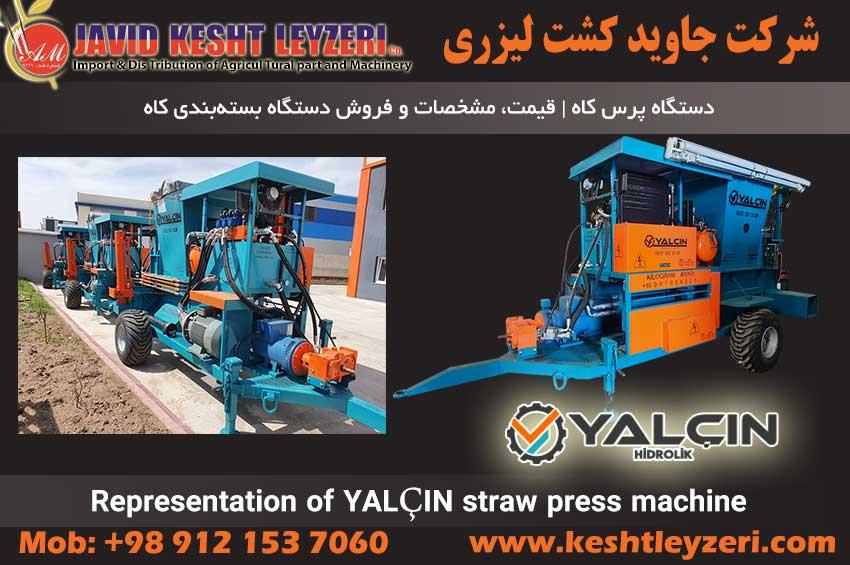
What is the necessity of revival and development of sunflower cultivation?
javid keshtleyzeri Co.ltd
List of contents of this section:
What is a sunflower plant?
What is the necessity of sunflower cultivation and the necessity of developing sunflower cultivation?
What are the important points about sunflower cultivation?
Final tips for sunflower cultivation
In the following, the above contents will be reviewed.
What is a sunflower plant?
Sunflower cultivation has spread in different regions of the province. This plant has been cultivated in Iran since 1346 and has a long history in Isfahan province. However, in recent years, due to the development of competing crops such as corn, rice, vegetables and summer crops in the second crop and insufficient attention to this crop, the area of sunflower cultivation has decreased. The lack of access to the water of Zayandeh River and the lack of water, especially in the summer season, have limited the cultivation of crops that require a lot of water, such as corn, rice, vegetables and summer crops, and have provided the ground for the revival and development of sunflower cultivation.
What is the necessity of sunflower cultivation and the necessity of developing sunflower cultivation?
Sunflower, with a compact and branched main root system, has the ability to spread secondary and penetrate deep into the soil. These features improve the absorption of water from the soil, so that this plant is able to continue growing and produce proper yield even in the condition of water shortage. Sunflower has relative resistance to soil salinity and shows good growth in soil texture with neutral acidity. In areas where irrigation with moderate salinity is used, sunflower can be cultivated.
Sunflower has little sensitivity to soil texture and grows well in soils that vary from sand to clay. Unlike corn, wheat and potatoes, sunflower needs little fertile soil to produce a satisfactory crop and can be cultivated even in marginal lands.
Sunflower grows well in most temperate regions and has wide adaptability. This plant has different morphological and physiological characteristics, which include insensitivity to day length, tolerance to cold, and tolerance to high temperatures.
Although sunflower is physiologically a three-carbon plant, its growth characteristics show similarities to four-carbon plants. This plant achieves fast growth and high yield in light and heat conditions. Increasing the concentration of carbon dioxide also helps the growth and better performance of sunflower.
Sunflower cultivation does not require special tools and it is possible to plant, grow and harvest it with the tools available in the province.
Research on sunflower breeds in Iran has been carried out for about fifty years, and the result of this research has led to the introduction of various cultivars and hybrids, adapted to the different conditions of the country, and having favorable characteristics.
During the growth period in Isfahan province, sunflower does not need to be sprayed against pests and diseases. Although some diseases are a threat to this plant, disease-resistant hybrids are being investigated, and some diseases are not prevalent in this region due to the dry weather.
The sunflower product has a guaranteed purchase, so there are no problems related to market fluctuations.
The cost of planting, maintaining and harvesting sunflower is much lower than other crops.
Considering the urgent need of the country to increase the production of oilseeds, sunflower is considered as a strategic product and the development of its cultivated area seems necessary. Considering the mentioned characteristics and the history of cultivation in the province, the development of sunflower cultivation is of great importance.
What are the important points about sunflower cultivation?
Sunflower cultivation is important for several reasons. Below are some important points about sunflower cultivation:
High yield: Sunflower provides better absorption of water from the soil due to its compact and branched root system, the power of secondary expansion and deep penetration into the soil. These characteristics make it continue to grow and produce high yields in water shortage conditions.
Resistance to soil salinity: Sunflower is relatively resistant to soil salinity, which makes this plant a suitable option in areas with soil salinity.
Compatibility with different types of soil: sunflower has little sensitivity to soil texture and grows well in different soils from sand to clay. This feature allows farmers to grow sunflowers in different types of soil.
Adaptability to climatic conditions: sunflower grows well in most temperate regions and has wide adaptability. This plant can grow well in different climatic conditions, including high temperatures.
No need for special tools: cultivation, cultivation, and harvesting of sunflowers do not require special tools, and in this sense, it costs less than some other products.
Guaranteed purchase and stability in the market: The sunflower product has a guaranteed purchase and therefore the problems related to market fluctuations will be less for the farmers.
Adaptation to climate changes and drought stresses: Considering the current conditions in terms of climate changes and drought stresses, the development of sunflower cultivation is possible as a suitable option to deal with these challenges and revive agriculture in some areas.
Providing the national need for oilseeds: Considering the urgent need of the country to increase the production of oilseeds, sunflower is considered as a strategic product.
According to these points, sunflower cultivation can be an economic and sustainable option for farmers.
Final tips for sunflower cultivation:
For sunflower cultivation, a land with a flat surface, gentle slope and permeable with a depth of 50 to 75 cm is suitable. Deep fall plowing is recommended to subsoil the remains of the previous crop, use of winter water ice to destroy diseases and pest larvae, and store water in the soil for spring planting. Adding 20 to 30 tons of animal manure before autumn plowing, crushing the clods with a disc
In late or early spring, and leveling the ground are necessary measures to prepare the sunflower bed. If needed, the preparation of the summer cultivation bed should be done as soon as possible. Before implementing the disc operation, the chemical fertilizers required for pre-sowing distribution, such as a portion of nitrogen, phosphorus and potash fertilizers, as well as pre-sowing herbicides, such as Treflan, should be distributed and immediately mixed with the soil. All operations must be designed in such a way that the number of disks and machinery traffic is minimized.
To achieve the proper establishment of the seedling in the soil, use the sunflower linear planting method. This method makes the operations of weeding, weeding, and cultivatoring with mechanized tools simple and easy. Sunflower can be planted with a variety of rows and weeds. The arrangement of rows is necessary to achieve the proper density, depth and arrangement of planting. Sowing lines should be straight so that subsequent operations, especially cultivator, are easy.
The seed planting depth varies from 3 to 5 cm depending on the soil texture. In heavy soils and at high temperatures, especially in the conditions of second sunflower cultivation, there is a need to pay more attention to the planting depth. In case of encountering water or soil salinity, it is better to cultivate on both sides of wide ridges and in the pit so that the seedlings are not exposed to high salinity.
The ideal planting density for sunflower, especially for new early hybrids with low height and smaller plants than open-pollinated cultivars, is about 12 plants per square meter. This density requires a row distance of about 10 to 12 cm, taking into account stacks of about 75 cm. The amount of seed consumption varies according to the desired density and the weight of one hundred seeds of the variety used, and it should be calculated and used considering the conditions. Normally, about 8 kg of seed per hectare is used.
Sunflower planting time can be done on different dates; Because its growing season is usually longer than the needs of the plant. The minimum temperature required for the germination of sunflower seeds in the soil is about 8 to 10 degrees Celsius, which is provided when the daily average air temperature reaches 10 to 15 degrees Celsius (depending on climate and soil factors). Choosing the right date for planting sunflowers needs to consider factors such as the length of the growing season, variety type, early autumn cold weather, interaction with the roundworms, insect activity, escape from the pollination period, and summer heat conditions.
The sunflower planting time can be divided into two periods: the first planting, which begins in the spring and when the weather conditions improve, and the second planting, which usually begins after the cessation of irrigation or grain harvest. Cultivation of oil sunflower in Isfahan province is mainly considered as a summer intercrop, which means that farmers start this cultivation after harvesting autumn grains or stopping irrigation. In the first planting or spring, the second half of May is the right time, and after that, sunflowers can be planted until the end of July. In times of delay, it is better to use early hybrids.
To be successful in sunflower cultivation, the selection of the right seed is very critical and must be coordinated with the objectives and the area. The best solution is to talk to experts of different regions and types of seeds and use certified seeds. Also, use a variety of figures; The old varieties of Azadgards such as Record, Zaria, Progress and Armavirski, imported hybrids such as Haysan 33, Allstar, Euroflor, etc., and domestic hybrids such as Azargol, Farrokh, Barzegar, Qasim, Shams, etc., are all effective choices due to their different characteristics. They are plants.
Sunflower needs about 6000 cubic meters of water for its growth and development. The most important period of providing sufficient water for the plant is the period of flowering and pollination. This plant is relatively drought tolerant during the growth stages and after flowering. To achieve high yield in all stages, sufficient water must be available to the plant, but in water shortage conditions, the amount of water can be reduced in budding, early flowering and seed filling stages.
In the early stages of growth, sunflowers have poor weed competition, but about a month after germination, they compete well with high growth rates. By using certified seed, not using unrotted manure, weed control in crops before or during fallow, and other farm hygiene practices, prevent weed outbreaks. Also, it is possible to use mechanical, agricultural and chemical control methods to control weeds.
Bird damage may be significant on small farms, but on large farms, the percentage of damage will be much lower. To prevent bird damage, you can use multiple crops, not planting near gardens and areas with a lot of trees, and using devices such as making noises, etc. to reduce bird damage.
Sunflower harvesting is often done using a combine harvester. The use of a special head for sunflower significantly prevents the loss of the product. If you don't have access to a special head, you can use the grain head with the appropriate adjustment of the combine to harvest sunflowers.






